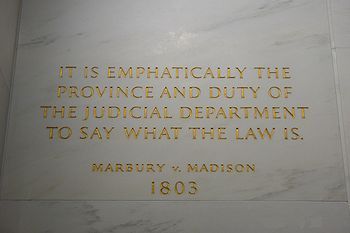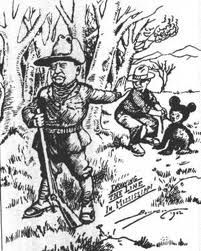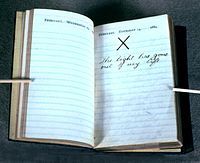Cross posted from The Stars Hollow Gazette
This is your morning Open Thread. Pour your favorite beverage and review the past and comment on the future.
Find the past “On This Day in History” here.
February 25 is the 56th day of the year in the Gregorian calendar. There are 309 days remaining until the end of the year (310 in leap years).
On this day in Japan, the Plum Blossom Festival is held. The Festival at the Kitano Tenmangu Shrine in Kyoto is one one of the most beautiful. The shrine was built in 947, to appease the angry spirit of bureaucrat, scholar and poet Sugawara no Michizane, who had been exiled as a result of political maneuvers of his enemies in the Fujiwara clan.
The shrine was dedicated to Michizane; and in 986, the scholar-bureaucrat was deified and the title of Tenjin (Heavenly Deity) was conferred.
The grounds are filled with Michizane’s favorite tree, the red and white ume or plum blossom, and when they blossom the shrine is often very crowded. Open-air tea ceremonies are hosted by geiko and apprentice maiko from the nearby Kamishichiken district. The plum festival has been held on the same day every year for about 900 years to mark the death of Michizane.
Sugawara no Michizane, August 1, 845 – March 26, 903, was a scholar, poet, and politician of the Heian Period of Japan. He is regarded as an excellent poet, particularly in Chinese poetry.
He was educated in a private school run by his father where he studies to become an official in the Court of the Japanese Emperor. His training and skill with Classical Chinese language and literature afforded him many opportunities to draft edicts and correspondences for officials in the Court in addition to his menial duties. Records show at this time he composed three petitions for Fujiwara no Yoshifusa as well as the Emperor. Michizane also took part in receiving delegations from the Kingdom of Parhae, where Michizane’s skill with Chinese again proved useful in diplomatic exchanges and poetry exchange. In 877, he was assigned to the Ministry of the Ceremonial, which allowed him to manage educational and intellectual matters more than before. While serving as governor of Sanuki Province, he intervened in a Court matter on the side Emperor Uda over Fujiwara no Mototsune and at the end of his term returned to the Court in Kyoto where he served in many positions.
He was appointed ambassador to China in the 890s, but instead came out in support of abolition of the imperial embassies to China in 894, theoretically in consideration for the decline of the Tang Dynasty. A potential ulterior motive may have lain in Michizane’s almost complete ignorance of spoken Chinese; most Japanese at the time only read Chinese, and knew little to nothing about the spoken language. Michizane, as the nominated ambassador to China, would have been presented with a potential loss of face had he been forced to depend on an interpreter. Emperor Uda stopped the practice of sending ambassadors to China by what he understood as persuasive counsel from Michizane.
Within the end of Emperor Uda reign in 897, Michizane’s position became increasingly vulnerable. In 901, through the political maneuverings of his rival, Fujiwara no Tokihira, Michizane was demoted from his aristocratic rank of junior second to a minor official post at Dazaifu, in Kyushu‘s Chikuzen Province. After his lonely death, plague and drought spread and sons of Emperor Daigo died in succession. The Imperial Palace’s Great Audience Hall (shishinden) was struck repeatedly by lightning, and the city experienced weeks of rainstorms and floods. Attributing this to the angry spirit of the exiled Sugawara, the imperial court built a Shinto shrine called Kitano Tenman-gu in Kyoto, and dedicated it to him. They posthumously restored his title and office, and struck from the record any mention of his exile. Sugawara was deified as Tenjin-sama, or kami of scholarship. Today many Shinto shrines in Japan are dedicated to him.

 On this day in
On this day in  On this day in 1954, a group of
On this day in 1954, a group of  By 1910, much of the world experienced a dramatic increase in polio cases and frequent epidemics became regular events, primarily in cities during the summer months. These epidemics-which left thousands of children and adults paralyzed-provided the impetus for a “Great Race” towards the development of a vaccine. Developed in the 1950s, polio vaccines are credited with reducing the global number of polio cases per year from many hundreds of thousands to around a thousand. Enhanced vaccination efforts led by the World Health Organization, UNICEF, and Rotary International could result in global eradication of the disease.
By 1910, much of the world experienced a dramatic increase in polio cases and frequent epidemics became regular events, primarily in cities during the summer months. These epidemics-which left thousands of children and adults paralyzed-provided the impetus for a “Great Race” towards the development of a vaccine. Developed in the 1950s, polio vaccines are credited with reducing the global number of polio cases per year from many hundreds of thousands to around a thousand. Enhanced vaccination efforts led by the World Health Organization, UNICEF, and Rotary International could result in global eradication of the disease. On this day in 1965,
On this day in 1965, 
 On this day in 1942,
On this day in 1942,  On this day in 1885,
On this day in 1885,  On this day in 2006, the last
On this day in 2006, the last  Worldwide, the last MASH unit was deactivated on October 16, 2006. The
Worldwide, the last MASH unit was deactivated on October 16, 2006. The 
